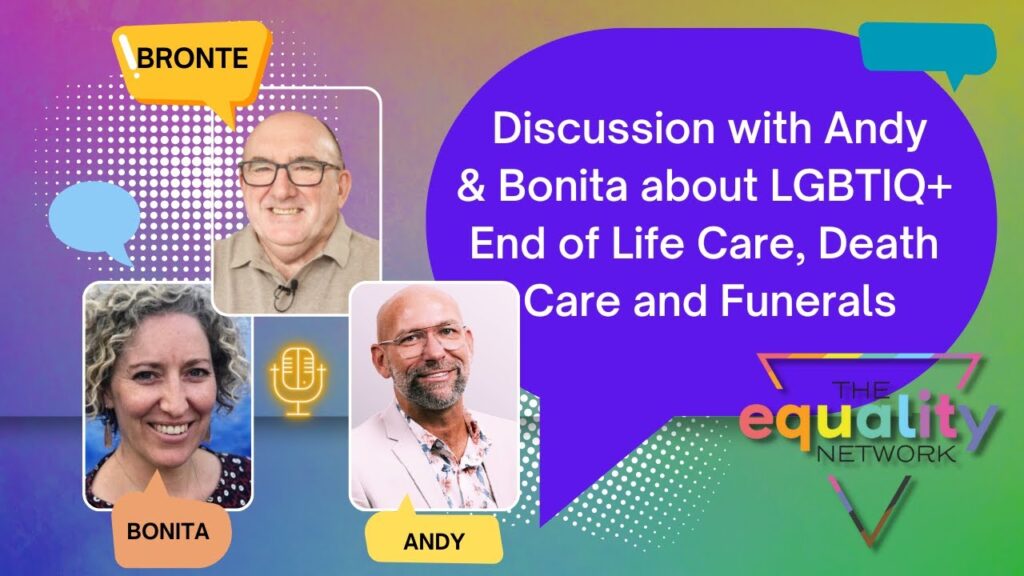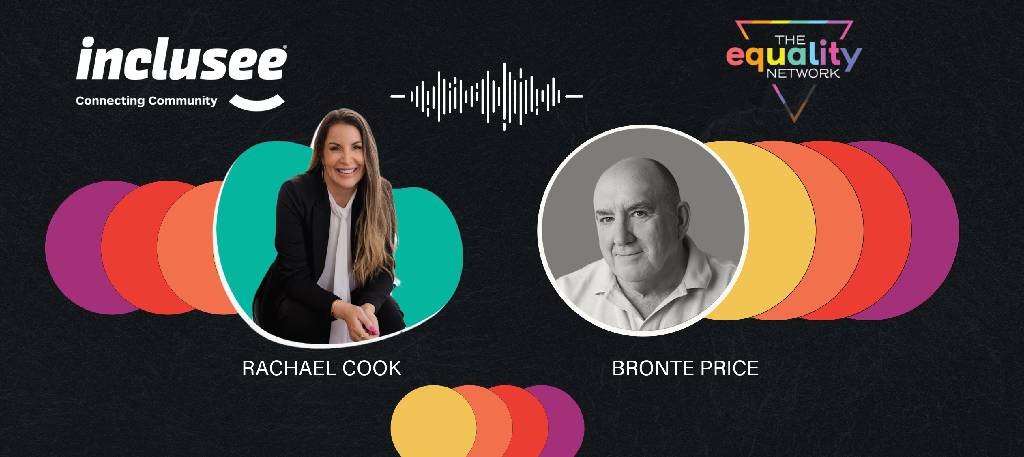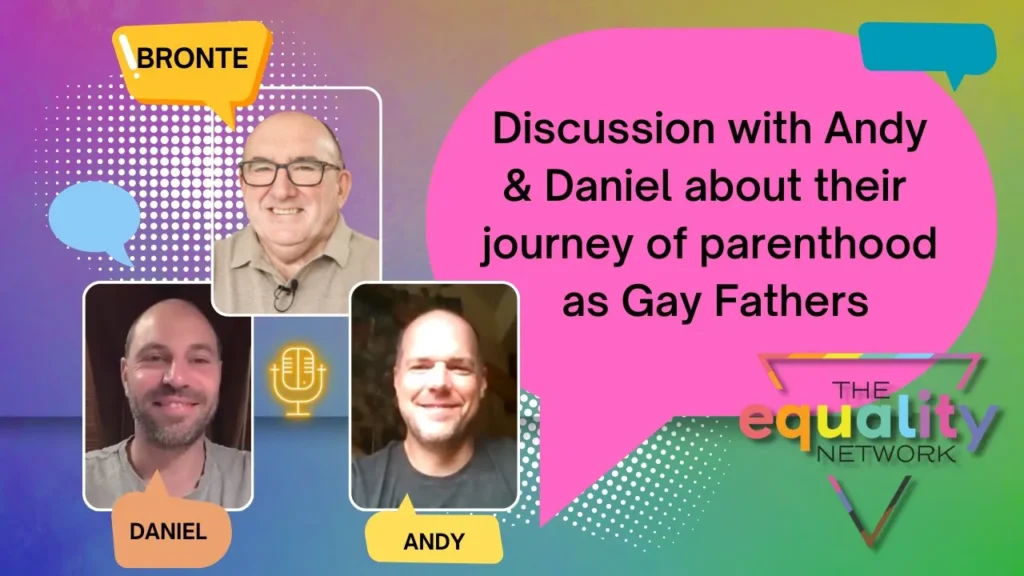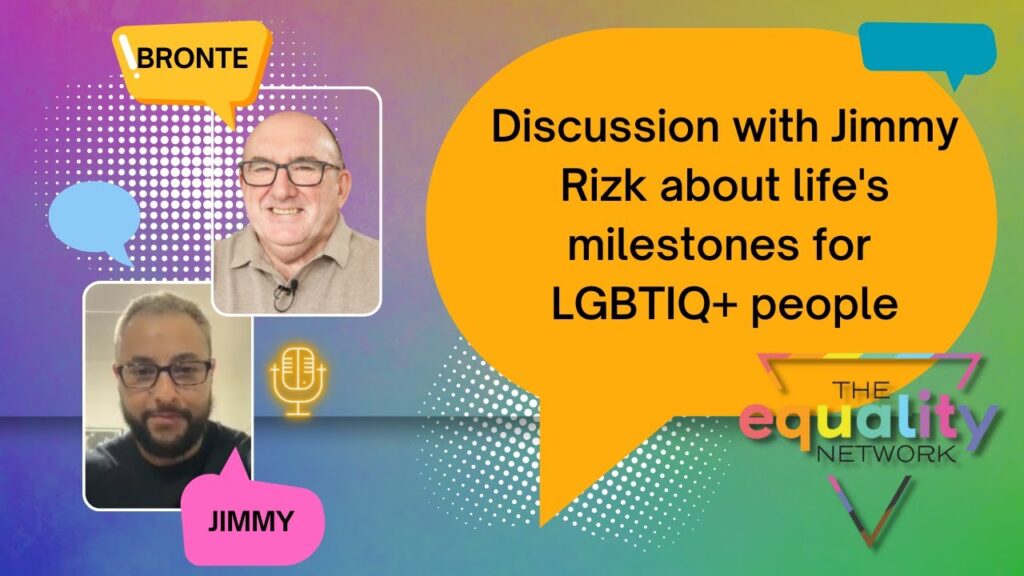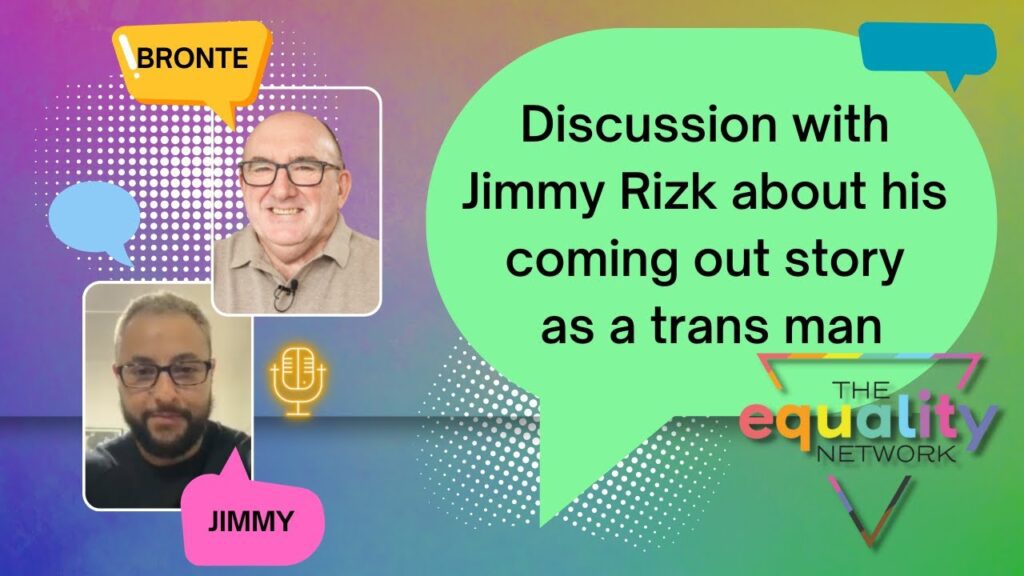Discussion with Kathy on World AIDS Day in San Francisco’s Castro Neighborhood
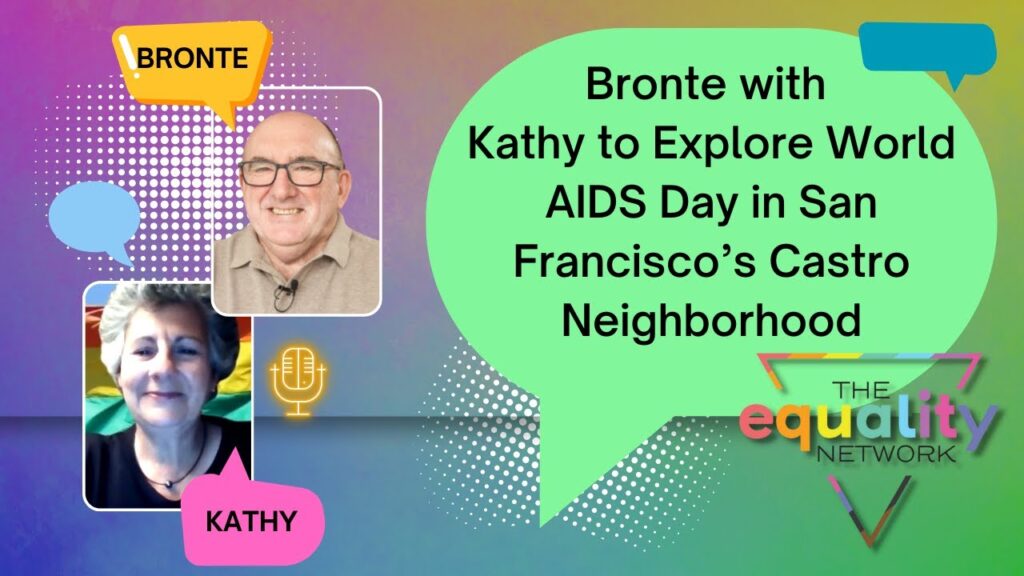
Join Bronte Price and Kathy Amendola as they delve into the heart of San Francisco’s iconic Castro neighbourhood on World AIDS Day. Kathy, a passionate advocate and walking tour guide, shares stories of resilience, remembrance, and community spirit. From the AIDS Memorial Globe to chalk art honouring lives lost, witness how the Castro continues to be a beacon of hope and cultural preservation.
Learn about the historical significance of this LGBTIQA+ district and discover why World AIDS Day remains a vital commemoration.
The interview meanders across the following discussion areas:
- Interviewing Kathy Amendola
- The Castro neighbourhood in San Francisco played a significant role during the AIDS epidemic, providing support and community for those affected.
- The AIDS Memorial Quilt project honours lives lost to AIDS, with each quilt panel representing a person.
- World AIDS Day is commemorated in the Castro with events like sidewalk chalk art and candlelight marches.
- PrEP (pre-exposure prophylaxis) has revolutionized HIV prevention, leading to a zero new infection rate in San Francisco.
- The Castro continues to be a place of freedom, pride, and cultural preservation for the LGBTIQA+ community.

Transcript of interview with Kathy Amendola hosted by Bronte Price
Bronte: Well, as we head towards World AIDS Day on the 1st of December, as we do each year, today we’ll take a look at the sorry history of the AIDS epidemic from the perspective of someone from the United States. We’ll also discuss the impact of AIDS on the community.
Bronte: There was a strong community in San Francisco during that time, and perhaps also in New York City. We’ll explore the advances made in preventing and managing HIV/AIDS since then and discuss the work that still needs to be done in this area.
Bronte: It’s my pleasure to welcome Kathy from San Francisco. Thank you for joining us and sharing your insights. Could you start by telling us a little bit about yourself?
Kathy: Certainly! I was actually born on the East Coast and worked in Manhattan for several years in the early eighties. Later, I moved to Maui, where I worked in luxury hotels, handling sales and marketing on the property. It was a wonderful experience, but my life took an unexpected turn. At 39, I decided I really wanted to embrace my identity as a lesbian.
Kathy: Seeking community and other connections, I transferred my hotel job to San Francisco. I settled in the Castro neighbourhood, and that was about 23 years ago. Around 17 years ago, I purchased a tour business from another lesbian named Trevor, who had started it in 1989. The business has a rich history, and I believe it’s essential to share that history through oral storytelling. My tours aim to inspire and educate people about LGBTIQA+ rights and equality.
Bronte: Fascinating! So, tell us more about your business. It’s a walking tour company, correct?
Kathy: Yes, that’s correct. It’s a walking tour business, but I’ve used these tours as a platform to advocate for LGBTIQA+ rights and women’s rights. Unfortunately, in the United States, most of us were raised with a big white lie—that only white, heterosexual, Christian men have equal rights. As a woman, I’ve experienced being treated as second class, earning less pay, and having my healthcare decisions influenced by others.
Kathy: Recently, there have been attempts to protect same-sex marriages, but the Republican party seems determined to strip away rights from everyone except white, heterosexual, Christian men. Our country is at a critical juncture, leaning toward fascism. My tours play a crucial role in raising awareness. Despite legal progress, I can still face discrimination in employment, housing, restaurants, movie theatres, libraries, and shops in most parts of the United States.
Kathy: It’s infuriating, and that’s why we must take our rights seriously. We have the power to change the world, and it’s all about human rights. Remaining neutral isn’t an option; we’re compelled to engage in political activism. Love is stronger than hate, but we’re also witnessing dangerous white supremacy. Standing up for democracy and equal rights is essential. I’ve transitioned from a tour guide to a civil rights activist.
Kathy: I encourage people everywhere to seek democracy because conservative parties in different countries often harbor white supremacist ideologies. We’re bigger than this, and we can make a difference.
Bronte: We were in San Francisco in August 2019, talking to some gay men from New York City. They expressed feeling unsafe on the East Coast, whereas gay men on the West Coast, particularly in San Francisco, didn’t share the same lack of safety. It certainly changed our perspective. Over the last few years, our view of what we thought were enduring rights for LGBTIQA+ people in the United States has shifted. Could part of the problem be that many of these rights are state-based rather than federal?
Kathy: Yes, it’s an entirely different climate nowadays. During the Obama years, progress seemed inevitable, but then Donald Trump unleashed white supremacy, tearing our country apart and affecting families like mine. New York has its own dynamics, but San Francisco stands out. It’s a vibrant LGBTIQA+ community across 45 blocks. We’re out and proud 24/7. Unlike other cities where diversity is confined to bars or gatherings, here you can be yourself on the streets.
Kathy: San Francisco’s Castro neighbourhood is at the heart of it all. It’s the largest LGBTIQA+ community globally, spanning those 45 blocks. There are no straight bars; everything caters to our diverse community. Rainbow flags adorn the streets, welcoming everyone. Since the Gold Rush days in the 1840s, San Francisco has been sexually fluid. But then Harvey Milk arrived in the 1970s, unintentionally creating this community.
Kathy: Harvey, a civil rights activist, owned a camera store at 575 Castro Street. As more diverse people moved in, he realized the issues they faced. Back then, it was mostly gay white men, but we’re evolving. Harvey ran for supervisor (akin to a councilman) and spoke for everyone. His impact rivals that of Martin Luther King. A Jewish New Yorker with a big mouth, he paid attention to the law and made a difference. Even during the AIDS epidemic, when 50% of our community was dying, we endured.
Bronte: It got stronger, and that’s the spirit of hope. As Harvey said, “Hope will never be silent.” There’s an inscription on one of the buildings near Harvey, if I recall correctly. So, how did the Castro become such a safe haven for gay men? Was it because of Harvey, or were there other factors at play?
Kathy: Well, let’s stick to the facts, but I’ll elaborate. Harvey arrived and opened the camera store. Remember, back then, selfies weren’t a thing. If you wanted intimate photos, someone had to develop them. So when Harvey moved in, word spread that he was developing intimate photos of men. Many men started hanging out there, eager to see those pictures. Social media was word-of-mouth, and the community grew.
Kathy: Eventually, Harvey became a supervisor at 48 years old. However, just 11 months later, he was tragically murdered. By that time, he had about 15,000 followers—mostly gay white men. This was unprecedented. Remember, being homosexual or trans was still illegal, and people faced arrest or mental illness diagnoses. But Harvey made us proud and left an enduring legacy felt even today in and around the Castro.
Bronte: Fascinating! Now, let’s talk about your own journey. Where were you living during the ’80s and ’90s, Cathy?
Kathy: Life is indeed a journey. I started as a very happy heterosexual woman, but magical things happened in my twenties. I became an active bisexual woman. I began in New York, where my world opened up—ethnicities, religion, and sexuality. The ’80s were wild—big hair, cocaine, disco, and new wave music. It was exhilarating. I considered myself very bisexual in New York.
Kathy: Later, I met someone and moved to Maui, still identifying as a bisexual lesbian. But at 39, I decided to follow my heart even further. These realizations don’t happen overnight. So, I left the island and moved to San Francisco. The rest, as they say, is history.
Bronte: Okay, and during that time, were you living in the Castro or close to it?
Kathy: I’ve always lived in the Castro, yes.
Bronte: Reflecting back over 40 years, can you recall what it was like to live as a gay woman in the Castro during the HIV and AIDS epidemic? You were there soon after that awful epidemic began, correct?
Kathy: Yes, by the time I arrived in San Francisco in 1999, things had changed. In the ’80s and ’90s, having AIDS or being gay was often considered worse than being a murderer. It was suffocating, and being out was risky—even at work. However, by ’99, the stigma around HIV had diminished somewhat. People were living with the virus, but the memories of the devastating impact remained.
Kathy: Walking through the Castro, you’d see death first hand. I remember similar scenes in New York’s Greenwich Village. The AIDS Memorial Quilt project, initiated by Cleve Jones, became a powerful symbol. Panels of the quilt were displayed in the Castro, memorializing those lost to AIDS and raising awareness. Between 1989 and 1996, the quilts were laid out on the National Mall in Washington, hoping President Reagan would take notice. Unfortunately, he didn’t care.
Kathy: When I arrived in San Francisco, I was appalled to learn about Reagan’s lack of compassion. As a former gun-toting Republican who had voted for Reagan twice, I now sat on the other side of the fence—a lesbian woman who couldn’t fathom his refusal to acknowledge the crisis. By 1998, around 20,000 people in San Francisco had died from AIDS.
Kathy: Thankfully, some stepped up. Nancy Pelosi, San Francisco’s representative, was a housewife who decided to run for Congress in 1987. Her first priority was securing federal aid funding for her dying community. She also played a role in establishing the AIDS Memorial Grove in Golden Gate Park, turning it into a national memorial. Every year, events are
held there for World AIDS Day.
Kathy: The women—especially the lesbians—also stepped in. They organized blood and food drives, a matter of life and death. Many hospitals turned away men with AIDS due to fear and ignorance. Lesions covered their bodies and mouths—it was a grim time.
Bronte: So, the women came in, and this is exactly why our alphabet changed. It used to be GLBT—that was the original order. But because the lesbian community stepped up during the AIDS epidemic, they felt that by honouring us, they should move the “L” first. So it went from GLBT to LGBT. And now, we’ve added “Q” and “R.” Quite a journey in those last few decades.
Bronte: Now, I want to discuss the AIDS Memorial Park in San Francisco. I’ve been there—it’s a massive space with nooks and crannies for reflection. The ground murals, those bricks with names of people who died of AIDS, create an incredibly emotional experience. But what surprised me was seeing a plaque honouring Nancy Pelosi. Considering all you’ve shared, she
truly was a fearless woman who knew she had to act.
Bronte: Back in the ’80s, President Reagan didn’t even utter the word “AIDS” until September 1985—years after the first reported cases. His chief of staff and spokesperson treated it as a joke, despite the seriousness and gut-wrenching impact. Pelosi, a white straight Catholic woman, did remarkable work. She was running for the first time, risking her career, but
our community’s strength prevailed.
Bronte: I’ve witnessed the devastating effects of AIDS first hand. A co-worker in New York died, and their family left the casket open. Seeing a 36-year-old man look 80, with a pasted-on moustache for recognition, was heart-wrenching. The wasting and aging were terrible. Those memories linger.
Bronte: The theme of women stepping to the forefront in the fight for human rights recurs in America and Australia. Stonewall and the Daughters of Bilitis played significant roles. But why did the women step in during the AIDS epidemic? Was it because no one else would, or was something else at stake?
Kathy: As you know, men and women were often separate within the LGBTIQA+ community. Before, when it wasn’t considered a mental illness or illegal, gay women and men needed each other. We’d go out together, looking like double dates. But then things changed. During the AIDS epidemic, lesbian women weren’t initially welcomed. Some men on the street still don’t like women there, but the women stepped up because their friends were dying, and they had to help.
Bronte: And as you may know, women were very organized, especially lesbians. It brought our community together, and that was the very reason—because of life and death. Is the separation between gay men and lesbians still as pronounced as it was before the AIDS epidemic, or has it changed?
Kathy: Yes, I swear. I had a neighbour for over 20 years. He still won’t say hello. And there are very few old gay men who remember when it was exclusively men. But that’s alright; it’s their problem. We all need each other.
Bronte: Absolutely. Where would we be without our gay or lesbian friends? But let’s talk about the Castro. It was a central point for gay men who were dying of AIDS and had HIV. They’d meet up on certain corners just to socialize, regardless of the lesions that appeared on their bodies. Was the Castro really important for socialization in the 1990s?
Kathy: Most of us move here and become our family. There’s always somebody who wants to talk, sit down, have coffee. We’re a social community, and it’s important to connect. That’s why we have such a friendly community—we’re happy to be here and around each other. It truly is the heart and soul of our community—people being open, happier, and loving.
Bronte: Interesting. And one thing that makes it easier in the Castro is that queer people are by far the majority. You’re not in the minority anymore.
Kathy: Well, that’s not entirely true. There are about 24,000 people in the Castro, and I’d bet that 50% are heterosexual. But the difference is, Bronte, we’re all allies. It can work.
Bronte: Thank you for clarifying that. Now, during the AIDS epidemic, having coffee or sharing food with people—was that their greatest need? Just to see someone, have a quick chat, and connect?
Kathy: There are two things. Despite the internet and apps like Grindr, we still have a need to connect. Just the other day, I met a guy who was by himself, visiting from Alabama. I told him to sit at a coffee shop; he’d meet the neighbours. People are more open.
Bronte: The other thing is that, generally speaking, we’re very pro-sex culture. Thanks to Grindr and always in Harvey Milk’s time, there’s a lot of sex going on. It’s a safe place for sexual expression and affection.
Kathy: Yes, it’s all about connecting with people, whether in one way or another. You’ll find whatever you want to find in the Castro, right?
Bronte: Honestly, it’s true. It’s freedom—a place for safety and to be proud of who we are and to shine. Has that attitude always been there in the Castro—being out, proud, and safe? Or were there times, particularly in the ’80s and ’90s during the height of the AIDS epidemic, when being gay was still stigmatized, even in the Castro?
Kathy: The Castro started as an Irish, Italian, Scandinavian, Catholic neighbourhood when Harvey moved in. It was cheap. During World War II, many families’ kids moved out and bought houses along the Eastern South Bay. Harvey’s personality and business attracted other gay men, and they bought these old, dilapidated homes. They fixed them up, and now they’re worth millions of dollars. The community shifted toward real estate—it’s some of the highest-priced real estate in the world.
Bronte: Wow, that’s fascinating. So what do you think are the next steps in HIV prevention and management? We’ve come a long way with medication regimes like PrEP. If someone had told a gay person in the ’80s about PrEP, they’d have thought it was crazy. But now it’s a reality. What’s next?
Kathy: It’s amazing. San Francisco achieved a zero new infection rate with HIV last year, largely due to PrEP. They’re heavily promoting it. Men, women, and gay men are taking it. Unlike the ’80s and ’90s, where sex was refrained due to AIDS, now it’s not. We no longer have an AIDS crisis; we’re dealing with a monkeypox crisis. But there’s progress, and vaccination plays a crucial role.
Bronte: And, also, I want to mention that Dr. Fauci actually started during the AIDS epidemic, which is why he knows a couple of things about viruses. During COVID, the Castro area had a vaccination rate of around 90% because COVID wasn’t our first pandemic—AIDS was. So, how is World AIDS Day celebrated in the Castro? It’s quite a sombre day, correct?
Kathy: Yes, indeed. On World AIDS Day, there are events happening both at the AIDS Memorial Globe in Golden Gate Park and in the Castro itself. One remarkable project involves school kids from the Harvey Milk Civil Rights Academy—probably second or third graders. They take chalk and write names on the sidewalk, honouring those who passed away. It’s a powerful moment. Additionally, there are candlelight marches and other events throughout the Bay Area.
Bronte: Interesting. And speaking of the Bay Area, is it correct that it’s highly lesbian-centric?
Kathy: Well, we’re here and there. Lesbians are everywhere. Oakland, across the bay, has a fantastic African American community. So, yes, it’s a pretty big community.
Bronte: Why is World AIDS Day so important for remembrance? Why should it continue every year on December 1st?
Kathy: The importance lies in preserving our culture. Often, people die, and nobody talks about them—it’s too painful. But we must remember an entire generation that was erased, and that legacy continues. We have to memorialize these people. That’s why I encourage everyone to get involved in their community—it’s about preserving our culture, much of which is oral history.
Kathy: Years ago, they didn’t record things because it was a conversion. So the quilt you mentioned earlier—is that still laid out annually in Washington DC, or is it just stored?
Bronte: No, it’s not. The foundation rents them out to raise money. But this year, they had the 35th anniversary of the quilt, laying out 3,000 panels in Golden Gate Park. My wife and I went, and personally, I’d never seen that many at once. I’ve seen a couple hundred, but not a thousand. It was a beautiful experience. Each quilt is the size of a grave, purposely made that way. The names and pictures tell the story of lives cut short by the virus. Very humbling. A whole generation was effectively wiped out during that time.
Kathy: Thank you so much for our chat, Bronte. I’ve enjoyed it immensely. My business is called Cruising the Castro Walking Tours. You can find my website at cruisingthecastro.com. Check out the calendar and see if the tour works for you. It’s been my pleasure to share this time with you. Thank you.
Bronte: Thanks so much for giving us your time today. We really appreciate it. Thank you.


